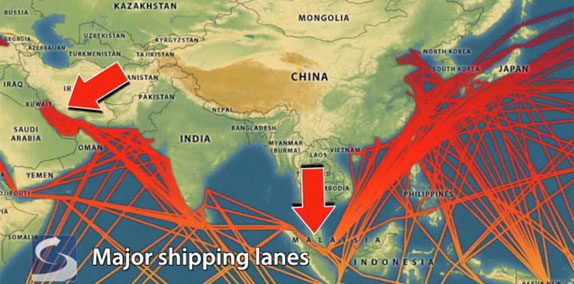by Carl Delfeld, Investment U Senior Analyst
Friday, July 20, 2012: Issue #1819
It?s no surprise to me that stock markets in Southeast Asia ? what I call the ?sweet spot? of Pacific Rim growth ? are outperforming. While emerging markets are down so far this year, the Philippines is up 19%, Vietnam has bounced back 17% and Singapore has risen 13%.
Located south of China and east of India, this booming region is sometimes overlooked by even the most sophisticated investors. Yet it represents 10 countries with a population of 600 million and an economic output of $1.7 trillion.
A free trade pact between the Southeast Asian regional grouping (ASEAN) and China (ASEAN-China Free Trade Area), took effect in January 2010. By the end of that year, ASEAN exports to China had leapt 54% and overall trade between these countries jumped 47%. This free trade area has become the third largest in the world and more than 7,000 products trade at zero tariffs.
The next move is a work led by China?s prime competitors. The Trans-Pacific Partnership countries ? Australia, Brunei Darussalam, Chile, Malaysia, New Zealand, Peru, Singapore, Vietnam and the United States ? announced the achievement of the broad outlines of an ambitious, twenty-first century Trans-Pacific Partnership agreement that will supercharge trade and investment in the Pacific Rim.
This agreement will also boost America?s stake in this vital region.?U.S. goods exports to the broader Asia-Pacific region totaled $775 billion in 2010, a 25% increase over 2009 and equal to 61% of all U.S. goods exported to the world.
Southeast Asia also sits astride the biggest trade routes in the world and the two busiest ports, Hong Kong and Singapore.

The South China Sea links the Indian Ocean with the western Pacific, but to get there ships need to move through one of several narrow straits that serve as chokepoints. To put things in perspective, the oil transported through the Malacca Strait from the Indian Ocean through the South China Sea, is triple the amount that passes through the Suez Canal and 15 times the amount that passes through the Panama Canal.
The stakes are high because roughly 65% of South Korea?s energy supplies, nearly 60% of Japan and Taiwan?s energy supplies, and about 80% of China?s oil imports come through the South China Sea. It also has proven oil reserves of seven billion barrels and an estimated 900 trillion cubic feet of natural gas.
But the importance of these prime trade routes and the natural resources in the area pose a risk to investors, as it makes the region a ?cockpit? of rising confrontation.
China is intent on pushing its territorial claims well beyond conventional norms and Law of the Sea guidelines. Countries affected by China?s overreach, such as Malaysia, Philippines Taiwan, Brunei and especially Vietnam, aren?t rolling over, but rather pushing back hard.

Oftentimes the confrontations are sparked by fishing boats and escalate from there. This is how the recent standoff between China and the Philippines over Scarborough Shoal began.
In late May, CNOOC (NYSE: CEO), a Chinese state-owned oil company, announced it was opening nine blocks off Vietnam?s coast to international bids for oil and gas exploration. These reach to within 37 nautical miles of Vietnam?s coast, which extends 2,000 miles. Then on June 21, Vietnam?s parliament passed a maritime law that reinforced its claims to the Spratly and Paracel Islands. China shot back that this a ?serious violation? of its sovereignty.
The 200 small islands and coral reefs ? only about 40 of which are permanently above water -? that support territorial claims are highly contentious.
The countries that are eye to eye with China often look to America?s diplomatic and military clout to balance the scales. Japan and South Korea also have a significant stake in how the dust settles.
These simmering conflicts rarely make the front page and shouldn?t discourage you from investing in Southeast Asia. But they should prompt you to manage risks using wide diversification and 20% sell stops.
Good Investing,
Carl
Investing in Southeast Asia: Proceed with Caution,VN:F [1.9.16_1159]
Rating: 5.0/5 (1 vote cast)
Source: http://www.investmentu.com/2012/July/investing-in-southeast-asia.html
No comments:
Post a Comment
Note: Only a member of this blog may post a comment.